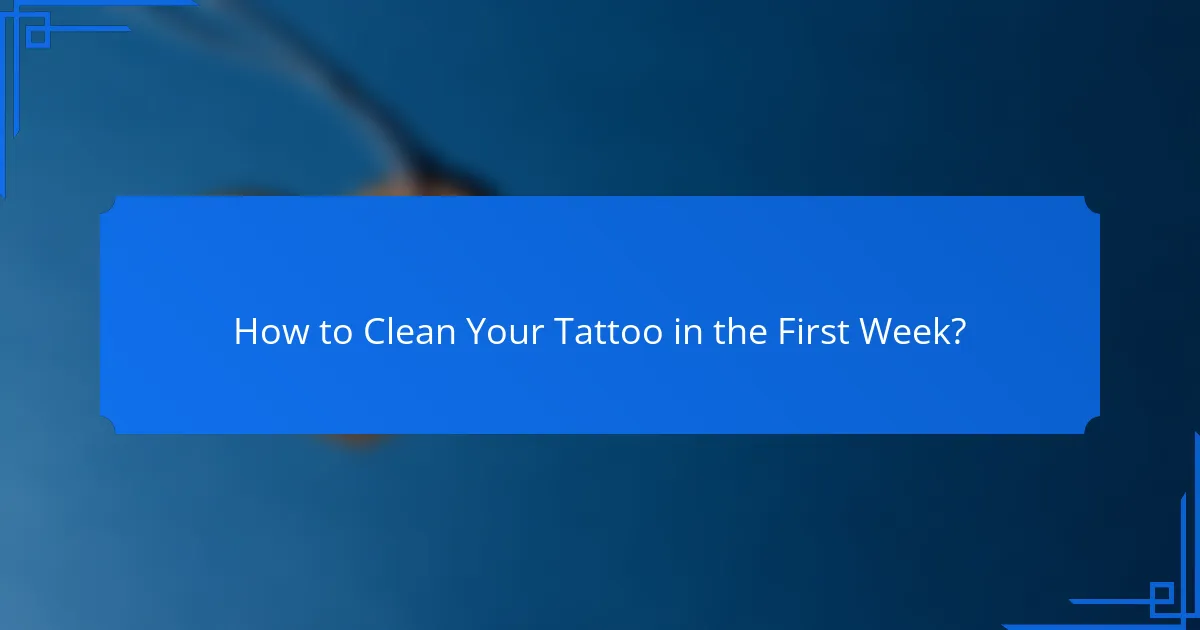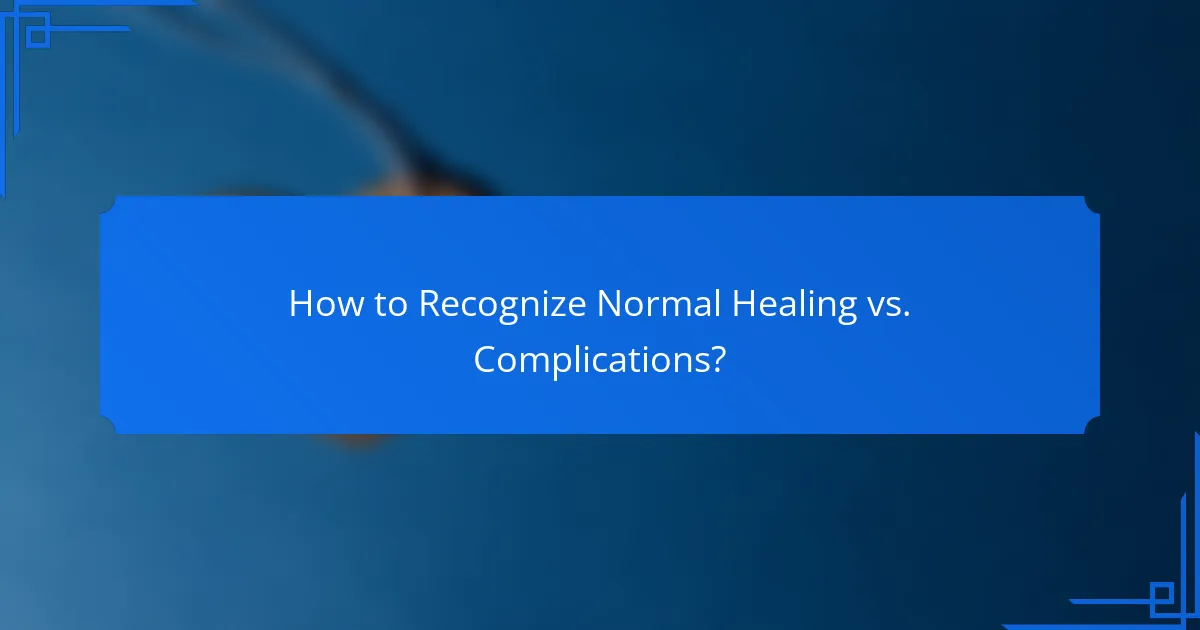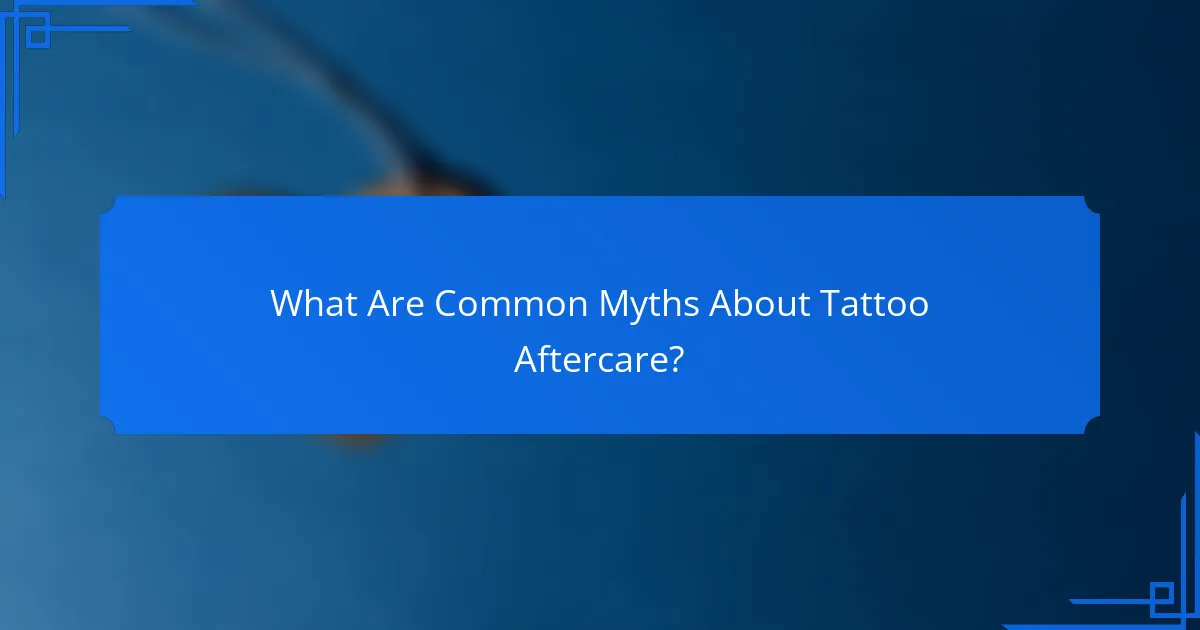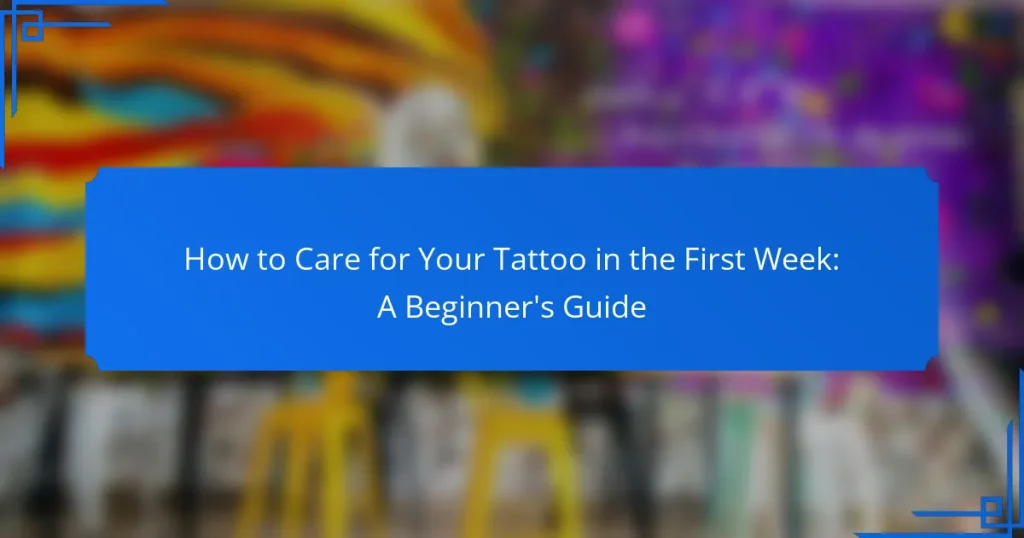Caring for your tattoo in the first week is essential for ensuring proper healing and vibrant color. By following a consistent cleaning routine and using the right aftercare products, you can protect your tattoo from infection and promote optimal recovery. This beginner’s guide will provide you with the necessary steps to keep your new ink looking its best.

How to Clean Your Tattoo in the First Week?
Cleaning your tattoo properly in the first week is crucial for healing and preventing infection. Follow a consistent routine to ensure your tattoo stays clean and vibrant.
Use mild soap and water
When cleaning your tattoo, opt for a mild, fragrance-free soap to avoid irritation. Use lukewarm water, as hot water can damage the healing skin and cold water may not effectively remove impurities.
Gently lather the soap in your hands and apply it to the tattoo using a light touch. Avoid scrubbing or using abrasive materials, as this can disrupt the healing process.
Pat dry with a clean towel
After rinsing your tattoo, gently pat it dry with a clean, soft towel. Avoid rubbing, as this can cause irritation and damage to the skin.
Ensure the towel is free from lint or debris to prevent any particles from sticking to the tattoo. It’s best to use a towel designated for this purpose to maintain cleanliness.
Avoid soaking in water
During the first week, refrain from soaking your tattoo in water, such as in baths, pools, or hot tubs. Soaking can lead to excessive moisture, which may increase the risk of infection.
Instead, take quick showers and keep the tattoo out of direct water flow. If your tattoo does get wet, make sure to dry it promptly and gently.

What Are the Best Aftercare Products for Tattoos?
The best aftercare products for tattoos include fragrance-free lotions and tattoo-specific ointments. These products help to moisturize the skin, promote healing, and prevent infection, ensuring your tattoo looks vibrant and well-maintained.
Use fragrance-free lotion
Fragrance-free lotion is essential for tattoo aftercare as it hydrates the skin without irritating it. Look for lotions that contain natural ingredients like aloe vera or shea butter, which can soothe the skin and aid in healing.
Apply a thin layer of lotion 2-3 times a day, especially after washing the tattooed area. Avoid lotions with alcohol or heavy fragrances, as these can cause dryness and discomfort.
Apply tattoo-specific ointment
Tattoo-specific ointments are formulated to provide optimal care during the healing process. These products often contain ingredients that help to protect the tattoo from bacteria while keeping it moisturized.
Use the ointment for the first few days after getting your tattoo, applying a small amount 2-3 times daily. After the initial healing period, you can switch to a fragrance-free lotion to continue caring for your tattoo.

How to Prevent Infection on a New Tattoo?
To prevent infection on a new tattoo, it’s crucial to maintain cleanliness and avoid exposing the area to bacteria. Proper aftercare, including keeping the tattoo covered and monitoring for any unusual symptoms, can significantly reduce the risk of infection.
Keep the tattoo covered
Keeping your tattoo covered with a sterile bandage for the first few days is essential. This barrier protects the tattoo from dirt and bacteria while it begins to heal. After the initial few days, you can switch to a breathable covering, but ensure it still offers some protection.
When removing the bandage, do so gently and wash your hands thoroughly beforehand. If you need to cover the tattoo again, use a clean, non-stick bandage to avoid irritation.
Avoid touching the tattoo
Touching your new tattoo can introduce bacteria from your hands, increasing the risk of infection. It’s important to resist the urge to scratch or pick at the tattoo as it heals. If you must touch it, ensure your hands are clean and dry.
Consider using a barrier, like a clean cloth, if you need to apply ointment or lotion. This minimizes direct contact while still allowing you to care for the tattoo properly.
Monitor for signs of infection
Regularly check your tattoo for any signs of infection, such as increased redness, swelling, or pus. These symptoms can indicate that bacteria have entered the skin, requiring prompt attention. If you notice any of these signs, consult a healthcare professional immediately.
Additionally, keep an eye out for fever or chills, which may indicate a more serious infection. Early detection is key to effective treatment and can help prevent complications.

What Should You Avoid During Tattoo Healing?
During the healing process of your tattoo, it’s crucial to avoid certain activities and conditions that can hinder recovery and affect the final appearance. Key areas of concern include sun exposure, scratching or picking at the tattoo, and wearing tight clothing.
Avoid sun exposure
Direct sunlight can cause your tattoo to fade and increase the risk of infection. For at least two weeks after getting your tattoo, keep it covered with clothing or a bandage when outdoors. If you must be in the sun, consider using a high-SPF sunscreen once the tattoo has fully healed.
Do not scratch or pick
It’s natural for a healing tattoo to itch, but scratching or picking at it can lead to scarring and infection. Instead, gently pat the area if it feels uncomfortable. Keeping the tattoo moisturized can help reduce itching and promote healing.
Avoid tight clothing
Wearing tight clothing over a new tattoo can cause irritation and restrict airflow, which is essential for healing. Opt for loose-fitting garments made from breathable fabrics to allow your skin to recover properly. This will help prevent friction and discomfort during the healing process.

How to Recognize Normal Healing vs. Complications?
Normal healing of a tattoo involves specific signs that indicate your skin is recovering properly. Complications, however, may present unusual symptoms that require attention. Understanding these differences is crucial for maintaining the integrity of your tattoo and your skin health.
Understand common healing signs
During the first week, a healing tattoo may exhibit redness, swelling, and scabbing. These are typical signs of the body’s natural healing process. You might also notice some peeling as the skin regenerates, which is completely normal.
It’s essential to keep the tattoo clean and moisturized to support healing. Use a fragrance-free lotion or ointment recommended by your tattoo artist. Avoid soaking the tattoo in water, such as in baths or pools, to prevent irritation.
Know when to contact a professional
If you experience excessive redness, prolonged swelling, or pus-like discharge, these may be signs of infection. Additionally, if you notice a fever or increased pain, it’s important to seek professional help. Early intervention can prevent more serious complications.
Other red flags include an unusual rash or hives around the tattoo area. If you’re unsure about any symptoms, it’s better to consult with your tattoo artist or a healthcare provider for guidance. Keeping a close eye on your tattoo during the first week can help ensure a smooth healing process.

What Are the Benefits of Proper Tattoo Aftercare?
Proper tattoo aftercare is essential for maintaining the quality and appearance of your tattoo. It helps in healing, ensuring that the colors remain vibrant and the design stays intact over time.
Ensures vibrant colors
Following a proper aftercare routine helps keep the colors of your tattoo looking fresh and bright. When a tattoo is well cared for, the ink settles into the skin effectively, allowing the pigments to show their true vibrancy.
To ensure vibrant colors, apply a recommended tattoo aftercare ointment or lotion regularly during the healing process. Avoid exposure to sunlight and refrain from picking at scabs, as these actions can dull the colors.
Reduces risk of fading
Proper aftercare significantly reduces the risk of fading, which can occur due to improper healing or environmental factors. Keeping the tattoo moisturized and protected helps maintain its integrity and prevents premature fading.
To minimize fading, keep your tattoo covered from direct sunlight and avoid soaking it in water, such as swimming pools or hot tubs, for at least two weeks. Regularly applying sunscreen once healed can also help preserve the tattoo’s appearance long-term.

What Are Common Myths About Tattoo Aftercare?
Many people hold misconceptions about tattoo aftercare that can hinder the healing process. Understanding these myths is crucial for proper care and to ensure your tattoo heals beautifully.
Myth: Tattoos need to be submerged
One common myth is that tattoos must be submerged in water for proper healing. In reality, immersing a new tattoo in water, such as in baths or swimming pools, can lead to complications like infection or fading.
Instead, it is advisable to keep your tattoo out of water for at least two weeks. Quick showers are fine, but avoid soaking your tattoo to allow it to heal effectively.
Myth: You should use any lotion on your tattoo
Another misconception is that any lotion can be used on a healing tattoo. Using the wrong products can irritate the skin and affect the tattoo’s appearance.
Opt for fragrance-free, gentle moisturizers or specialized tattoo aftercare ointments. Always check the ingredients to avoid harsh chemicals that could harm your tattoo.
Myth: Scabbing is a sign of a bad tattoo
Some believe that if a tattoo scabs, it means the artist did a poor job. However, scabbing is a normal part of the healing process as the skin repairs itself.
It’s essential to let scabs fall off naturally. Picking at them can lead to scarring or loss of ink, so resist the urge to scratch or peel.


